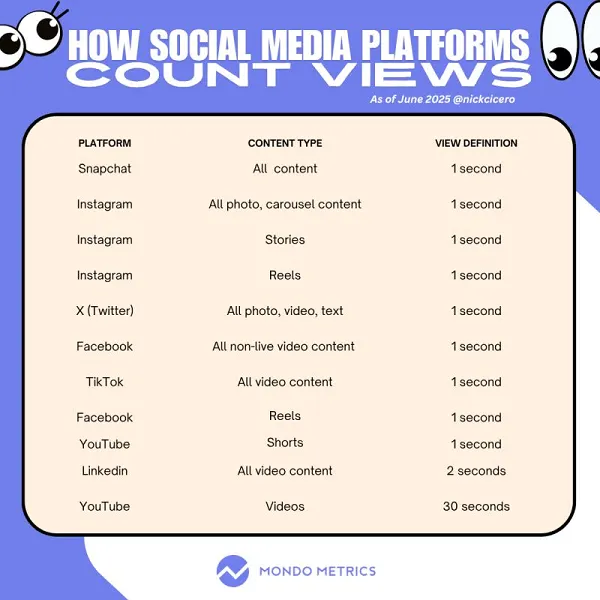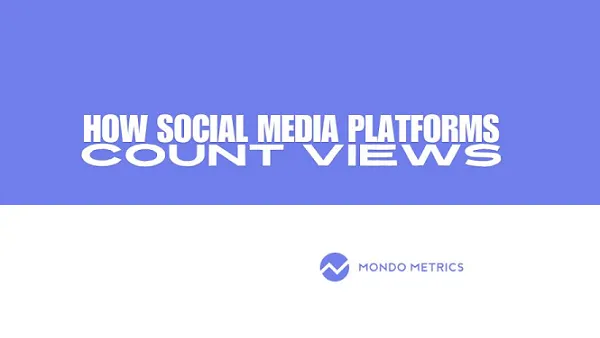Video content continues to dominate social platforms—but have you ever wondered what really counts as a “view”? The definition varies wildly between platforms, which can make it difficult to compare performance across channels.
With recent updates, especially from Meta, it’s more important than ever for social media marketers to understand how each app tracks video views and what those numbers actually mean.
Meta’s Big Change: Instant Video Views for Reels and Beyond
As part of its broader shift to position all non-live videos as Reels, Meta is aligning its view-count method across formats. Previously, standard Facebook videos (non-Reels) required 3 seconds of view time to register as a view.
Now, any video that starts playing—Reels or not—counts as a view immediately. This change significantly inflates view numbers, but reduces their value as a true measure of engagement.
Industry Insight: Views Are Not All Equal
Social analytics expert Nick Cicero (Mondo Metrics) points out that every major platform now counts a view after just one second—with a few exceptions:
| Platform | What Counts as a View? |
|---|---|
| Meta (FB & IG) | As soon as the video starts playing |
| TikTok | 1 second or more |
| Snapchat | 1 second |
| X (Twitter) | 1 second |
| 2 seconds | |
| YouTube (Standard) | 30 seconds |
| YouTube Shorts | 1 second |
That 30-second threshold on YouTube (excluding Shorts) makes it a rare platform where view metrics still reflect meaningful engagement. However, most platforms offer additional metrics—like 2-second and 3-second views, completion rates, and watch time—to help advertisers gain deeper insights.
Why This Matters for Marketers
Cicero nails it with a key reminder:
“Views are cheap. Attention is expensive.”
Understanding how views are counted helps you interpret campaign performance more accurately. One second of autoplay in a feed doesn’t mean someone actually watched—or cared about—your content.
For advertisers and content creators, focusing on completion rates, average watch duration, and retention curves can tell a much more valuable story than view count alone.
The Takeaway: Don’t Be Misled by Big Numbers
Video metrics aren’t standardized. A million views on TikTok is not the same as a million on YouTube. That’s why it’s critical to analyze engagement alongside views—especially when budgeting ad spend or comparing results across platforms.
If you need a quick reference guide, Mondo Metrics has published an updated infographic on video view measurement across major platforms. It’s worth bookmarking for any data-driven social media strategy.





